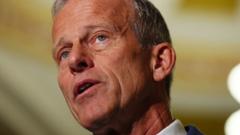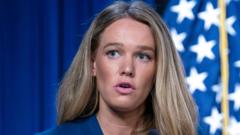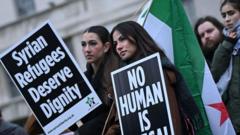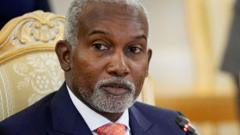The Trump administration's immigration policies have come under scrutiny due to their inconsistent treatment of different groups, with white Afrikaners being welcomed as refugees while Afghans, who aided U.S. forces, face deportation.
Trump's Immigration Policies: A Study in Contradictions

Trump's Immigration Policies: A Study in Contradictions
As U.S. refugee rules favor white Afrikaners, many Afghans face deportation, revealing shocking disparities in immigration policy.
On the same day that a chartered flight brought dozens of white South African Afrikaners to the United States, the Trump administration revealed plans to deport thousands of Afghan refugees. This decision is emblematic of the contradictions inherent in Trump's immigration stance, which has drawn sharp criticisms for targeting specific groups while extending favors to others.
Refugees from South Africa were invited by President Trump, who cited ongoing racial discrimination against them at home. This welcome stands in stark contrast to the administration’s stringent immigration policies that have effectively barred most refugees, including those from Afghanistan—many of whom faced dire threats after aiding U.S. forces during the chaotic withdrawal in 2021.
Trump’s hardline approach to immigration has been a cornerstone of his political campaign, capturing support from a range of voters dissatisfied with current immigration trends. His administration originally aimed to conduct a massive deportation operation, resulting in an executive order to suspend resettling refugees altogether. However, the decision to accept Afrikaners raises uncomfortable questions about Trump’s criteria for “acceptable” immigrants.
Christopher Landau, the deputy secretary of state, emphasized the vetting process for the new arrivals, stating that they had been scrutinized to ensure their suitability. In the backdrop of America’s immigration landscape, the favorable treatment of white Afrikaners juxtaposed against the plight of Afghan refugees showcases a fundamental inequality in policy implementation, further entrenching divisions over who qualifies for solace in the U.S.






















